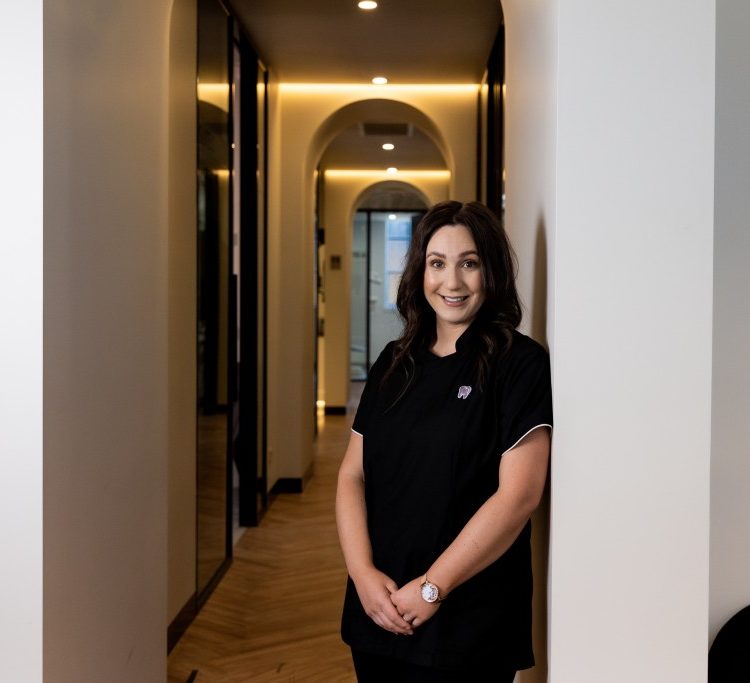Early Intervention Orthodontics in Melbourne
What’s an early orthodontic treatment?
Early orthodontic treatment, often referred to as interceptive orthodontics, is designed to assist in the management of teeth and jaw alignment for young children, typically between the ages of 4 and 9.
Interceptive care allows the dentist to monitor facial growth and dental development. In some cases, addressing developmental concerns early may assist in managing the complexity of future orthodontic needs.














This cosmetic dental procedure is elective in nature and may not be appropriate for all patients. Individual results and restoration longevity differ significantly between patients. For comprehensive Treatment risks and considerations, please visit our Treatment risks page here

Providers of Invisalign First Treatment
Common dental alignment issues in children include crossbites, crowding, spacing, and protruding teeth. As providers of Invisalign First treatment, our experienced team can assist your child using clear aligners or traditional methods such as palatal expanders and braces.
We are committed to accommodating a diverse range of needs with a personalised approach to dental care. Our services include paediatric dentistry for young children, cosmetic dentistry to assist with the appearance of your smile, and emergency dental care. We aim to provide same-day appointments for urgent cases whenever possible.
NEW TO DENTISTRY IN CANTERBURY? DISCOVER OUR IDEOLOGY OF CARE
Recommended Age for a First Consultation
The best age for the first orthodontic consultation
It is generally recommended to book an initial orthodontic consultation for children between the ages of 4 and 9. At this developmental stage, the teeth and jaw are still growing, which may make them more responsive to orthodontic intervention if required. Issues such as underbites in young children may be associated with narrow airways or muscle function. In these instances, our children’s dentists can provide referrals to a relevant ENT or myofunctional therapist to support comprehensive care.
Even if immediate treatment is not indicated, a consultation allows the dentist to monitor the growth of your child’s teeth and jaws, assisting in the management of their oral development over time.

Signs That May Indicate a Need for Orthodontic Assessment
Parents may notice specific behaviours or physical traits that suggest a child’s teeth or jaws are not aligning as expected. The following signs may indicate that an orthodontic consultation is warranted:
- Premature or delayed loss of primary (baby) teeth.
- Lack of spacing between baby teeth, or visible crowding.
- Persistent thumb sucking beyond the age of 3.
- Habitual mouth breathing or snoring.
- Teeth grinding (bruxism).
- Difficulty with biting or chewing food.
- Speech difficulties.
- Teeth erupting out of the expected order.
- Teeth that do not meet evenly when biting.
- Crowded or protruding front teeth.
- Shifting or clicking sounds in the jaw during movement.
- The Relationship Between Jaw Development and Breathing
If you observe these signs, an assessment can determine if orthodontic intervention is appropriate to assist with your child’s dental development. It is important to note that jaw structure and nasal breathing can be interrelated. In some instances, narrow dental arches may be associated with mouth breathing or snoring. Early evaluation allows the dentist to monitor these factors and collaborate with other healthcare professionals if required.

Potential Benefits of Interceptive Orthodontics
How can early intervention assist your child?
Early detection allows the dentist to monitor the development of your child’s teeth and jaws. In some instances, interceptive treatment may assist in managing the complexity of future orthodontic needs, potentially reducing the reliance on more invasive procedures, such as jaw surgery, later in life.
Potential benefits of early detection and management may include:
- Assisting in the management of developing jaw issues to support future alignment.
- Correcting bite irregularities to support oral function.
- Aligning crowded teeth, which may facilitate easier brushing and oral hygiene maintenance.
- Guiding the eruption of permanent teeth to manage crowding or spacing.
- Supporting the development of jaw alignment and facial symmetry.
- Assisting with the management of oral habits, such as thumb-sucking and teeth grinding.
- Screening for signs associated with airway function or swallowing patterns.
- Facilitating referrals to other health professionals, such as ENTs or speech pathologists, when indicated.
The Early Intervention Process
A treatment plan tailored to your child’s needs
The initial visit typically involves a comprehensive physical examination of your child’s teeth, mouth, gums, and jaw, often accompanied by X-rays to assess development.
Following the examination, the dentist will review the scans to identify any existing or potential alignment issues. Based on this assessment, they may recommend commencing treatment or schedule future review appointments to monitor your child’s dental development as they grow.
A Supportive Experience for Your Child
We believe that oral hygiene education should begin early. At Dentistry in Canterbury, we are dedicated to providing a supportive and comfortable environment during your child’s dental visits.
Our team maintains current training in children’s dentistry to deliver professional care focused on your child’s comfort. Book a consultation with one of our children’s dentists today – we are here to assist your child in building lifelong oral health habits.


Comprehensive Dental Care with a Personal Touch
Are you looking to support your oral health and the appearance of your smile? Our experienced team provides a broad range of dental services, ranging from general dentistry to restorative and cosmetic procedures. Book a consultation today, and we will develop a treatment plan that is tailored to your individual requirements.
FAQs
- When should I book my child’s first orthodontic consultation?
- How can I prepare my child for their first appointment?
- What happens during the initial consultation?
- How do I know if orthodontic assessment is necessary?
- How does early treatment affect facial development?
Consistent with recommendations from the Australian Society of Orthodontists (ASO), it is often recommended that children have an orthodontic assessment between the ages of 7 and 9. During this developmental stage, the transition from baby teeth to adult teeth begins, which allows the dentist to identify potential misalignment or developmental concerns that may require intervention.
Preparation can help support a positive experience for young children. You can introduce the concept of dental visits through age-appropriate books or by explaining the process in simple terms to help manage their expectations.
Our team will typically take records such as X-rays, photographs, and digital scans of your child’s teeth. Following this, the dentist will review the results to determine an appropriate treatment plan. In some cases, immediate treatment may be indicated; alternatively, the dentist may recommend monitoring your child’s development over time.
Visible misalignment of teeth or bite issues often indicate that a child may benefit from an orthodontic assessment. Additionally, habits such as prolonged thumb sucking, teeth grinding, mouth breathing, or difficulty chewing may suggest underlying issues. If you are unsure, scheduling a consultation with a dentist can help clarify your child's needs.
Early orthodontic intervention may assist in supporting the development of the jaw and facial structure. Treatment often targets oral habits and growth patterns that can influence development. for example, thumb sucking or crossbites can impact jaw alignment. Addressing these issues early may also assist in managing risk factors associated with airway function, such as snoring.
Qualified Dental Practitioners
Industry-Recognised Canterbury Dentists

Dr. Julie Ghaly

Dr. Grace Campbell

Dr. Gina Malak

Dr Vivienne Tran

Dr. Claire Abraham

Dr. Marina Atalla

Dr. Amisha Hindocha

Dr. Slaine O’Sullivan

Alanna Grieger

Niloufar Shakiba

Liz

Emily Khoo
State-of-the-art technology
We are committed to utilising the latest dental technology and ongoing training to support optimal outcomes.Calm, soothing environment
We aim to put even anxious patients at ease with our relaxing and comfortable atmosphere.Family-owned & trusted for over 35 years
Providing dedicated family dentistry, we welcome patients of all ages.General dentistry is for patients of all ages offering complete, comprehensive dental health care.
Learn More NowWe work toward creating youthful smiles for patients whose natural teeth require replacement.
Learn More Now
At Dentistry in Canterbury, we are committed to providing comprehensive general dental care. We also offer facial aesthetic treatments to complement your smile. Our team takes a gentle and friendly approach to patient care.
About
Service Areas
Copyright © | Dentistry In Canterbury ABN: 24 985 368 567 | Ts & Cs | Privacy Policy




